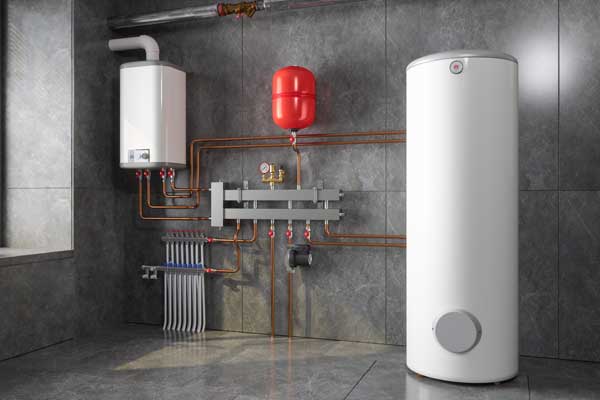What are your thoughts and feelings about How to Maintain Your Water Heater & Prolong its Life?

Warm water is important for everyday convenience, whether it's for a revitalizing shower or washing meals. To ensure your hot water system runs efficiently and lasts much longer, regular maintenance is vital. This short article gives practical pointers and insights on just how to maintain your home's hot water system to prevent disruptions and expensive fixings.
Intro
Maintaining your home's warm water system could seem complicated, but with a few basic steps, you can ensure it runs efficiently for years to find. This overview covers every little thing from understanding your warm water system to do it yourself upkeep tips and understanding when to employ professional help.
Significance of Keeping Your Hot Water System
Routine upkeep not just extends the lifespan of your warm water system yet additionally ensures it operates effectively. Ignoring upkeep can bring about decreased performance, greater power bills, and even premature failure of the system.
Indications Your Hot Water System Needs Maintenance
Knowing when your hot water system needs attention can avoid major problems. Keep an eye out for indicators such as irregular water temperature level, weird sounds from the heating system, or corroded water.
Purging the Hot Water Heater
Purging your hot water heater eliminates sediment accumulation, enhancing efficiency and prolonging its life.
Checking and Replacing Anode Rods
Anode rods avoid corrosion inside the tank. Examining and changing them when broken is critical.
Complicated Concerns Needing Expert Assistance
Examples consist of significant leaks, electric troubles, or if your hot water heater is constantly underperforming.
Regular Specialist Maintenance Perks
Specialist maintenance can include comprehensive examinations, tune-ups, and making certain conformity with safety requirements.
Checking and Changing Temperature Setups
Changing the temperature setups makes certain optimum efficiency and safety.
Do It Yourself Tips for Upkeep
You can perform numerous upkeep tasks yourself to keep your warm water system in leading condition.
Looking for Leakages
Consistently examine pipes and connections for leakages, as these can result in water damages and greater bills.
Understanding Your Hot Water System
Before diving right into upkeep tasks, it's useful to understand the fundamental parts of your warm water system. Normally, this consists of the hot water heater itself, pipes, anode rods, and temperature level controls.
Month-to-month Maintenance Tasks
Regular month-to-month checks can assist catch small issues prior to they intensify.
Evaluating Stress Alleviation Valves
Testing the stress relief valve ensures it operates appropriately and avoids too much pressure build-up.
Insulating Pipelines
Shielding hot water pipelines lowers warmth loss and can save power.
When to Call a Professional
While do it yourself upkeep is useful, some problems need specialist know-how.
Conclusion
Normal maintenance of your home's warm water system is important for performance, longevity, and price savings. By adhering to these tips and understanding when to seek expert aid, you can make sure a reputable supply of hot water without unanticipated disruptions.
How to Maintain an Instant Hot Water Heater
Before tinkering with your hot water heater, make sure that it’s not powered on. You also have to turn off the main circuit breaker and shut off the main gas line to prevent accidents. Also turn off the water valves connected to your unit to prevent water from flowing into and out of the appliance. 2. When you’re done, you have to detach the purge valves’ caps. These look like the letter “T†and are situated on either side of the water valves. Doing so will release any pressure that has accumulated inside the valves while at the same time avoid hot water from shooting out and burning your skin. 3. When the purge valves’ caps are removed, you have to connect your hosing lines to the valves. Your unit should have come with three hoses but if it didn’t, you can purchase these things from any hardware or home repair shops. You can also get them from retail stores that sell water heating systems. Read the user’s manual and follow it to complete this task properly. When the hosing lines are connected, open the purge port’s valves. 4. You should never use harsh chemical cleaners or solutions when cleaning your unit. Make use of white vinegar instead. It should be undiluted and you’ll probably use about 2 gallons. 5. Now flush your water heater. This task should probably take about 40 minutes. We can’t give you specific directions for this because the procedure is carried out depending on the type, model and brand of your heater. With that being said, refer to the user’s manual. 6. When you’re done draining the unit, you have to turn off the purge port valves again. Remove the hosing lines that you earlier installed on each of the water valves. Put the valve caps (purge port) back in their respective places and be very careful so as not to damage the rubber discs that are found inside these caps. 7. Now that everything’s back in place, check your user’s manual again to find out how to reactivate your water heating system. 8. Once it is working, turn one of your hot water faucets on just to let air pass through the heater’s water supply pipes. Leave the tap on until water flows smoothly out of it. https://www.orrplumbing.com/blog/2014/september/how-to-maintain-an-instant-hot-water-heater/

As a reader about Tips on Maintaining a Water Heater, I think sharing that chunk was important. Kindly set aside a second to share this blog post if you appreciated it. Thanks a bunch for your time. Come back soon.
Request Free Estimate